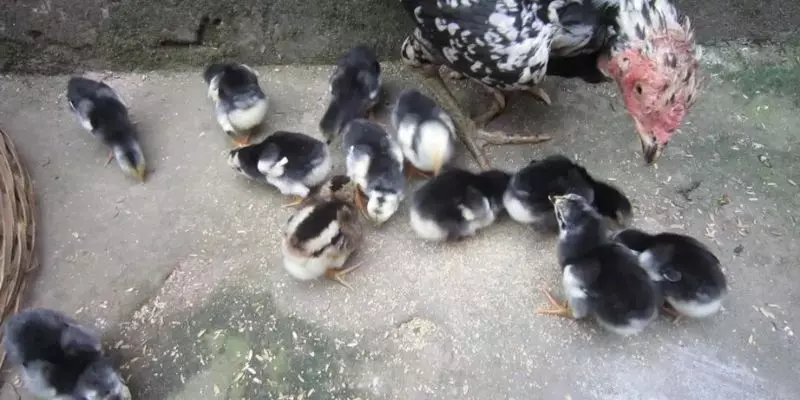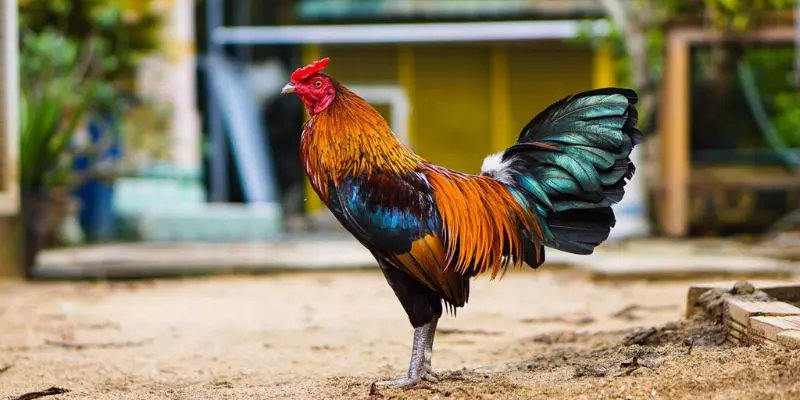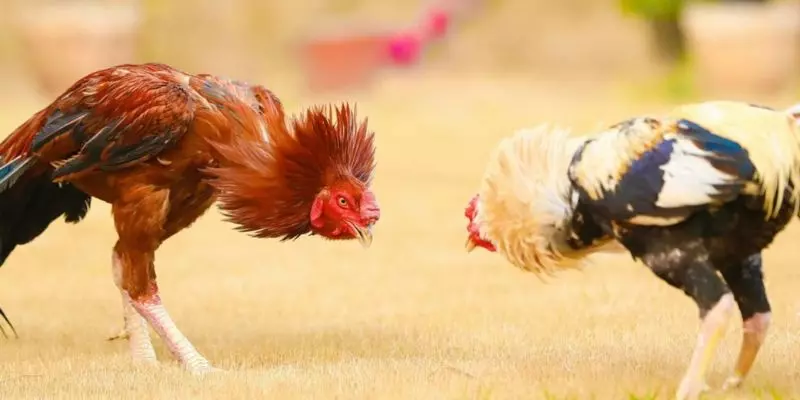How to breed cockfighting requires a lot of space preparation, breed selection, nutritional care, training and health protection. Raising fighting chickens requires a lot of space preparation, breed selection, nutritional care, training and health protection. 747live‘s article will help you improve your chicken raising effectively.
Prepare space for how to breed cockfighting
Preparing a suitable space in How to breed cockfighting is the first and most important step for cockfighters. The space for How to breed cockfighting needs to ensure safety, hygiene and comfort for the chickens.
Choose a location
When choosing a location to How to breed cockfighting, keep in mind the following factors:
- Location: You should choose a high, dry and airy place, avoid damp places that can easily cause disease in chickens.
- Light: Chickens need exposure to sunlight, but they also need shade to avoid heat.
- Space: Make sure it is large enough for chickens to move and live comfortably.
Barn design
The barn is the main residence of fighting chickens, so it needs to be designed carefully:

- Size: Each fighting chicken needs at least 1m2 of living space.
- Materials: You should use durable, easy-to-clean materials such as wood, bamboo or stainless metal.
- Structure: The barn needs a roof, raised floor and partitions to avoid drafts.
Equipped with facilities
In addition to the barn, you need to prepare the following equipment:
Feeding and drinking troughs: Place them in an easily accessible location but avoid spills or dirt.
- Heat lamp: Necessary for chicks or on cold days.
- Laying nest: If you raise laying hens.
- Sanitary equipment: Broom, shovel, compost bin…
Properly preparing the space to How to breed cockfighting will create a solid foundation for the nurturing and development of fighting chickens. A good living environment not only helps chickens stay healthy but also reduces the risk of disease and increases efficiency in training fighting chickens.
Choose a suitable fighting chicken breed
Choosing the right fighting chicken breed is one of the factors that determine success in how to breed cockfighting. Each breed of fighting chicken has its own characteristics in appearance, personality and fighting ability.
- Asil chicken: Asil chicken originates from India and is known as one of the oldest fighting chicken breeds. Asil chickens stand out with their balanced bodies, big, strong legs and sharp, curved beaks. In particular, Asil chickens have a fierce personality, tenacity and very high endurance. They are often favored in long matches because of their ability to withstand attacks and fight to the end.
- Shamo chicken: Shamo chicken is a famous Japanese fighting chicken breed, with a tall body, long neck and high legs. The Shamo chicken’s personality is quite special, they are calm, intelligent and have good strategies in matches. These characteristics help Shamo chicken become one of the most popular fighting chicken breeds in the world.
- Hatch Chicken: Hatch Chicken comes from America and is known for its compact body but strongly developed muscles. Their personality is very agile, aggressive and powerful attacks. Hatch chickens are often chosen in short matches due to their speed and strength.
Proper ways to breed cockfighting require experience, so if you are a beginner, you need to consult with experienced people or experts in this field. Choosing the right breed of fighting chickens not only helps you get healthy chickens with good fighting ability, but also makes raising and training easier.
How to breed cockfighting with a reasonable diet
Nutrition plays an important role in the physical and mental development of fighting chickens. A balanced and appropriate diet will help fighting chickens stay healthy, have good resistance and maximize their fighting ability.

Nutritional needs of fighting chickens
Fighting chickens need to be fully provided with the following nutrients:
- Protein: Necessary for muscle and hair growth
- Carbohydrates: Main source of energy
- Fat: Provides energy and supports vitamin absorption
- Vitamins and minerals: Strengthen the immune system and overall health
- Water: Ensures metabolism and regulates body temperature
Diet according to developmental stage
The diet of fighting chickens needs to be adjusted according to each stage of development:
- Chicks (0-8 Weeks): During the early stages of life from 0-8 weeks, chicks need a diet rich in protein to support rapid development. Chick feed should contain 20-22% protein. Free and frequent feeding, about 4-5 times per day, helps ensure that chicks always have the nutrition they need to develop strong muscles and bones. This also helps chicks build a good health foundation for the next stages of development.
- Adult Chickens (8-20 Weeks): When chickens reach the 8-20 week stage, the diet needs to be adjusted to accommodate slowing growth. The amount of protein in food should gradually decrease to about 18-20%. The number of feedings should also be reduced, about 3-4 times per day. This helps chickens avoid overnutrition, while still ensuring adequate energy supply for muscle development and preparation for fighting.
- Adult Chickens (Over 20 Weeks): When chickens enter the adult stage, over 20 weeks, the diet should be maintained at a stable level with about 16-18% protein. The number of feedings continues to decrease to 2-3 times per day. At this stage, the chicken has fully developed and needs to maintain a stable physical condition to prepare for matches. A reasonable diet helps chickens maintain strength, endurance and good fighting ability.
Building a barn to how to breed cockfighting
The standard way to How to breed cockfighting is that you will invest in building a coop. Building a quality and comfortable barn will help create favorable conditions for the process of how to breed cockfighting.

Space and location requirements
To ensure chickens have enough space to move naturally and grow healthily, the cage area needs to be large enough for the number of chickens you want to raise. Each chicken needs its own space to move and exercise, to help avoid stress and disease. The ideal area is about 1-2 square meters per chicken.
The location of the chicken coop should be in an airy place, away from direct sunlight in the afternoon to avoid heat and reduce the risk of heat stress for chickens. Choose a location with enough natural light in the morning and shade in the afternoon, and make sure the coop is not affected by strong winds or leaking rain.
Barn design
The standard way to how to breed cockfighting is that the chicken coop needs to be built with quality materials to ensure durability and safety. Common materials include wood, stainless steel, and wire mesh. The coop needs to have a sturdy frame to prevent chickens from being injured or escaping.
Thus, applying appropriate techniques and measures will help you How to breed cockfighting effectively and safely. Therefore, we hope that 747live’s information will be helpful to you.
